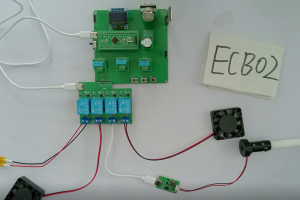设计说明书
总字数:20000+
摘 要
博物馆是知识传播的关键场所,其内部环境的温度与湿度状况,对于文物的妥善保存以及参观者的舒适体验有着重大影响,不过传统博物馆在温湿度控制方面,往往依靠人工调节方式,这种方式存在响应速度迟缓、控制精度较低的问题,基于此,设计一种借助STM32构建的恒温恒湿系统,以达成自动化、智能化的环境控制,有不容忽视的现实意义。
此系统借助三路DHT11传感器来分别测量温湿度,一旦平均温湿度超出所设定的范围,便会自动开展加热、制冷、加湿或者除湿操作,触发声光报警以起到提醒作用,用户可借助按键来设置温湿度的上下限值,并且手动操控相关设备,系统还凭借HC-SR501红外热释电传感器对非参观区域的人员活动给予监测,依靠MQ-2进行烟雾浓度检测,要是发现异常状况就会发出警报。系统经由OLED显示屏展示数据,并且借助ESP8266 WiFi模块把数据发送到手机端,以此达成远程监控以及控制,该系统可做到实时监测并且自动调节博物馆内的温湿度,保障文物保存环境的稳定性,提升参观者的舒适体验,其智能化设计提升了系统的响应速度以及控制精度,同时降低了人工管理成本,有广阔的应用前景以及推广价值。
关键词:博物馆;恒温恒湿系统;单片机;温度;湿度
ABSTRACT
Museums are an important place to spread knowledge, where temperature and humidity are related to the preservation of cultural relics and affect the comfort of tourists when visiting. Most museums still use manual methods to adjust temperature and humidity, which is slow and not controlled accurately enough. To solve this problem, this article has designed a constant temperature and humidity system based on STM32, which can be used to control the environment in an automated and intelligent way.
The system uses three DHT11 sensors to measure temperature and humidity data. If the calculated average temperature or humidity exceeds the previously set range, it will start the heater, chiller, humidifier, or dehumidifier itself, and will also emit sound and flash to remind the staff. Users can press the button to adjust the maximum and minimum values of temperature and humidity, and can manually switch these devices. The system also installs an HC-SR501 infrared sensor to check whether there is any activity in areas that are not open to the public.The OLED screen shows that through the WiFi module of the ESP8266, the data can also be transmitted to the mobile phone for remote viewing. The biggest advantage of this system is that it can stare at the temperature and humidity changes in the museum for 24 hours, and automatically adjust to the most suitable state for the preservation of cultural relics, so that people who come to the visit feel more comfortable.
Keywords: museum; Constant temperature and humidity system; singlechip; Temperature; humidity
目 录
摘 要
ABSTRACT
目 录
第1章 绪论
1.1 选题背景和意义
1.2 国内外研究现状
1.2.1 国内研究现状
1.2.2 国外研究现状
1.3 研究内容及研究方法
1.3.1 研究内容
1.3.2 研究方法
第2章 系统总体设计
2.1 系统需求分析
2.2 主要模块方案选择
2.2.1 主控芯片选型
2.2.2 温湿度检测模块
2.2.3 红外热释电检测模块
2.2.4 无线通信WIFI模块
2.2.5 继电器模块
2.2.6 显示模块
2.2.7 按键模块
2.2.8 声光报警模块
2.2.9 烟雾检测模块
2.3 整体设计方案
第3章 系统硬件设计
3.1 主控模块设计
3.1.1 单片机
3.1.2 单片机最小系统设计
3.1.3 晶振电路设计
3.1.4 复位电路设计
3.2 传感器模块设计
3.2.1 温湿度模块
3.2.2 人体热释电模块
3.2.3 烟雾检测模块
3.3 显示模块设计
3.4 无线通信网络模块设计
3.5 声光报警模块设计
3.6 按键模块电路设计
第4章 系统程序设计
4.1 编程软件介绍
4.2 系统主程序设计
4.3 独立按键
4.4 OLED显示程序设计
4.5 WiFi模块程序设计
4.6 继电器模块程序设计
4.7 烟雾模块程序设计
4.8 温湿度检测模块子程序设计
第5章 系统测试与分析
5.1 软硬件测试
5.1.1 系统硬件测试
5.1.2 系统软件测试
5.2 验证
5.2.1 系统集成测试
5.2.2 系统测试过程
第6章 结论
6.1 总结
6.2 展望
参考文献
致谢
附录A 原理图
附录B PCB板
附录C 程序
购买后可查看具体内容!

